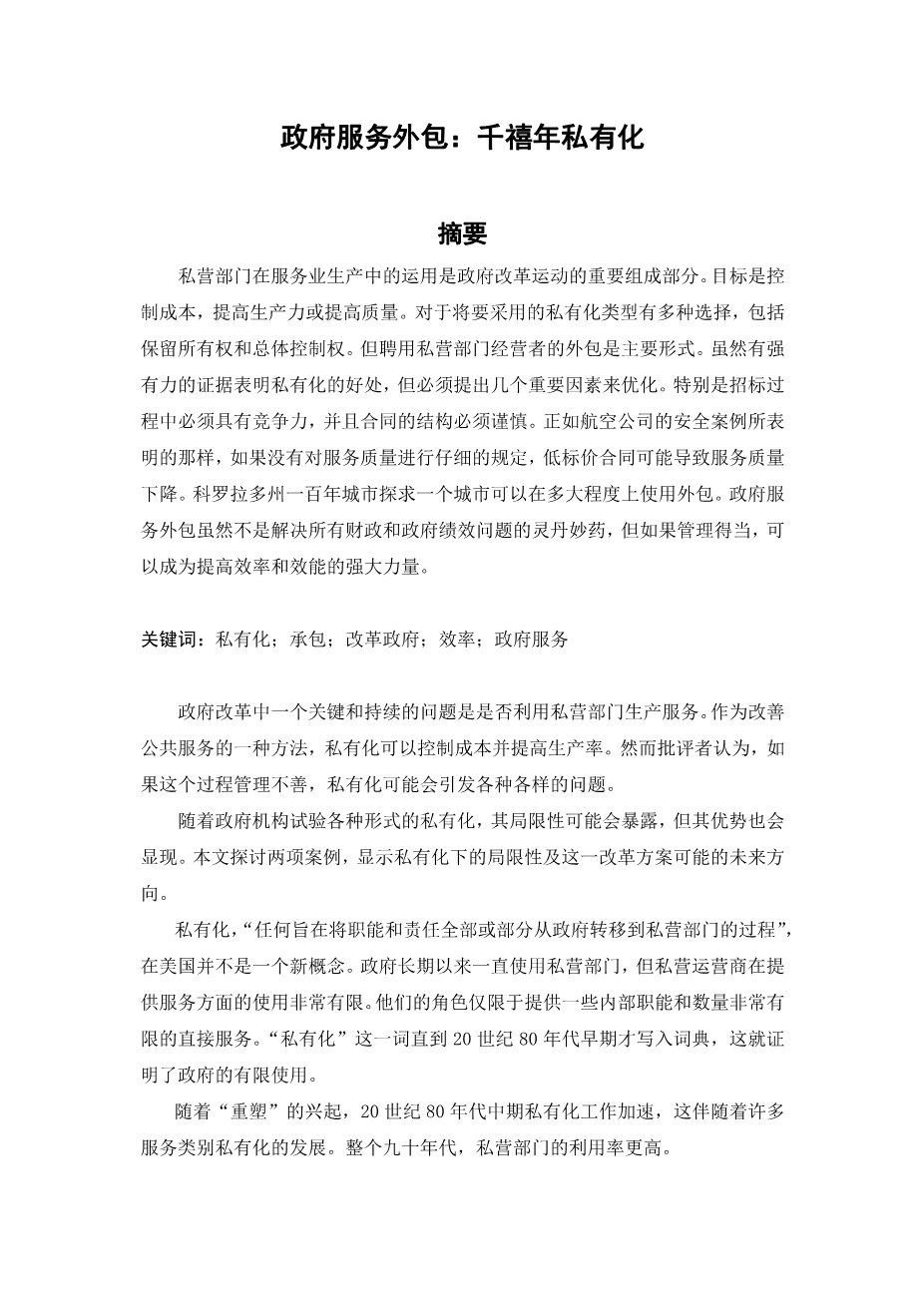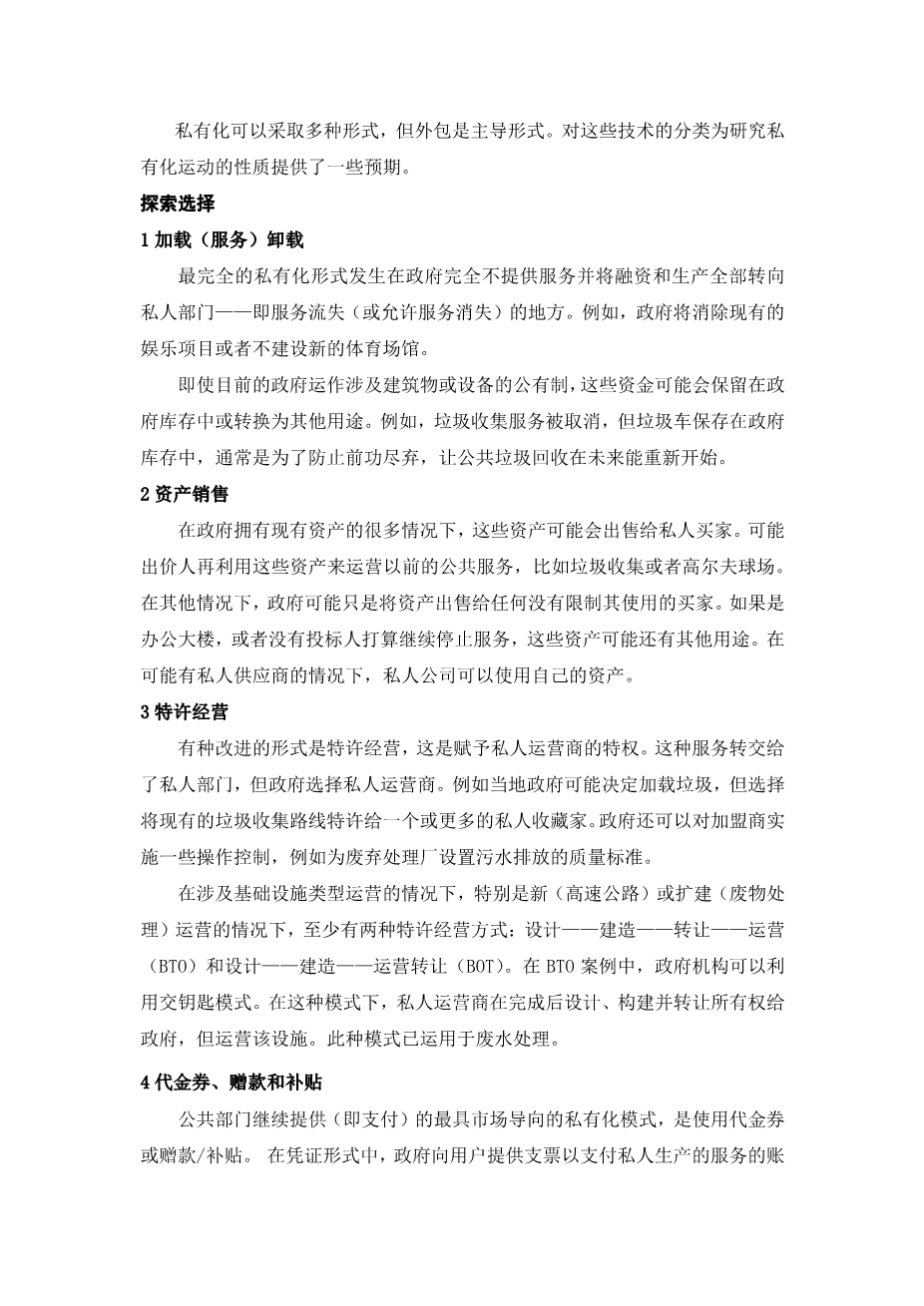Contracting Out Government Services:Privatization at the Millenium
Abstract
Utilization of the private sector in producing services is an important element in the movement toward reforming government. The aim is to contain costs, increase productivity, or improve quality. There are choices as to the type of privatization to be employed. Contracting out that involves retaining ownership and overall control but employs a private sector operator, is the dominant form. Although there is strong evidence of the benefits of privatization, several important factors must be present for optimization.In particular, the bidding process must be competitive and the contract must be carefully structured. As the airline security case illustrates, low bid contracting without careful specification of service quality can lead to poor service. How extensively a city can employ contracting out is being tested by the city of Centennial, Colorado. Although not a panacea for all fiscal and government performance problems, contracting out, if properly managed, can be a strong force for delivery of greater efficiency and effectiveness.
Keywords: privatization, contracting out, reforming government, efficiency, government services
A key and continuing issue in government reform is the option of utilizing the private sector in producing services. Offered as a method to improve public services, privatization can contain costs and increase productivity. Critics,however, contend that privatization can raise a variety of problems if the process is not well managed.
As government agencies experiment with various forms of privatization,its limitations may be exposed but its possibilities can be revealed. Two case studies are explored that show limitations of privatization efforts and the possible future direction of this reform option.
Privatization, “any process aimed at shifting functions and responsibilities, in whole or in part, from the government to the private sector” [1] is not a new concept in the United States. Governments have long used the private sector. However, the use of private operators in supplying services was very restricted. Their role was limited to providing a few in-house functions and a very limited number of direct services. The limited use by governments of private producers was evidenced by the fact that the word, “privatization,” did not make the dictionary until the early 1980s.
Spurred by the emergence of “reinventing,” the acceleration of privatization efforts began in the mid-1980’s with the growth of privatization in many service categories. The greater utilization of the private sector continued throughout the 1990s.
Privatization could take various forms even though, as we shall see, contracting out is the dominant form. A classification of those techniques provides some prospective for examining the nature of the privatization movement.
EXPLORING THE CHOICES
1. Load (service) shedding
The most complete form of privatization occurs where the government simply disassociates itself from providing the service and turns financing and production entirely over to the private sector⎯ i.e., service shedding (or simply allowing the service to disappear). Examples would be the government eliminating existing recreation programs or not building a new sports stadium.
Even if the current government operation involves public ownership of buildings or equipment, those assets may be retained in the government inventory or converted to other uses. An example would be a trash collection service that is eliminated but the trash trucks are kept in the government inventory, often to be held in reserve in case the privatization effort is aborted and public trash collection is resumed in the future.
2. Asset sales
In many cases where there are existing assets owned by government, those assets may be sold to private buyers. The assets may be sold to a bidder who would then use them to operate the previously publicly operated service such as trash collection or a golf course. In other cases, the government may just sell the assets to any buyer with no restrictions on their use. The assets may have other uses, in the case of an office-type building, or there may be no bidder who intends to continue the discontinued service. In the case where there may be a private provider, the private firm may use its own assets.
3. Franchising
A modified form of load shedding involves franchising⎯ i.e., a special privilege granted to a private operator. The service is turned over to the private sector but the government chooses the private operator or operators. For example, a local government may decide to load shed trash collection but chooses to franchise the existing trash collection routes to one or more private collectors. The government also may exercise some operational control over the franchisee such as setting quality standards for effluent discharges in the case of waste treatment plants.Where infrastructure-type operations are involved, especially in the case of new (highway) or expanded (waste treatment) operations, there are at least two variants of franchising: design-build-transfer-operate (BTO) and design-build-operate-transfer (BOT). In the BTO case, the government agency can utilize a turnkey model in which the private operator designs,constructs, and transfers ownership upon completion to the government but operates the facility. This model has been used in wastewater treatment.BOT is a more complete form of privatization since the private sector may continue to own the facility, often subject to government regulation,on a long-term basis. After a number of years, however, the private firm may transfer ownership to the public sector. This model has been used for toll roads, solid waste fac
剩余内容已隐藏,支付完成后下载完整资料


英语译文共 7 页,剩余内容已隐藏,支付完成后下载完整资料
资料编号:[468701],资料为PDF文档或Word文档,PDF文档可免费转换为Word
以上是毕业论文外文翻译,课题毕业论文、任务书、文献综述、开题报告、程序设计、图纸设计等资料可联系客服协助查找。


